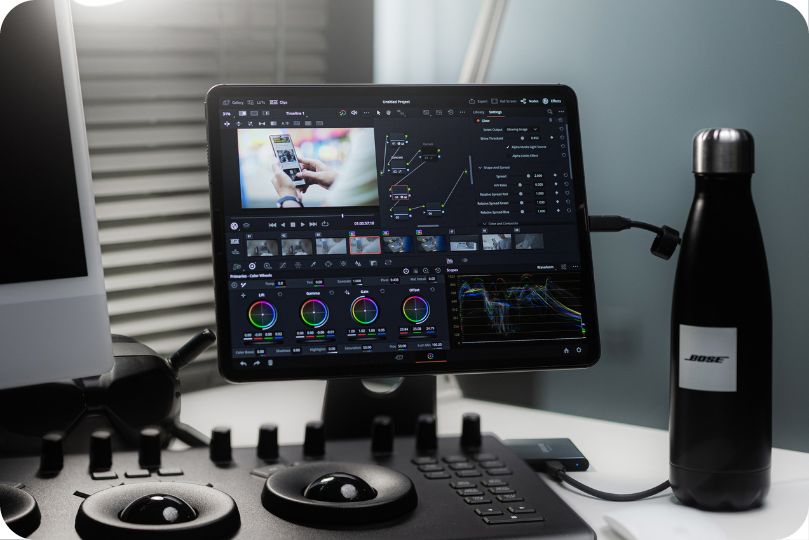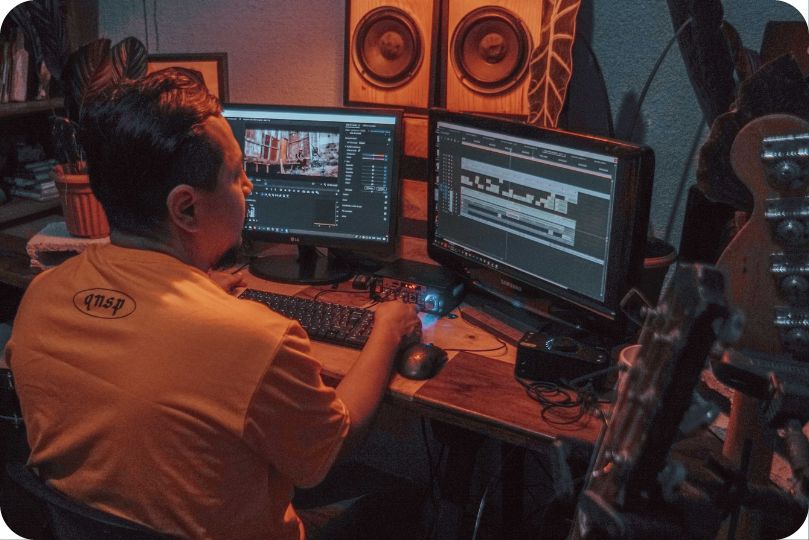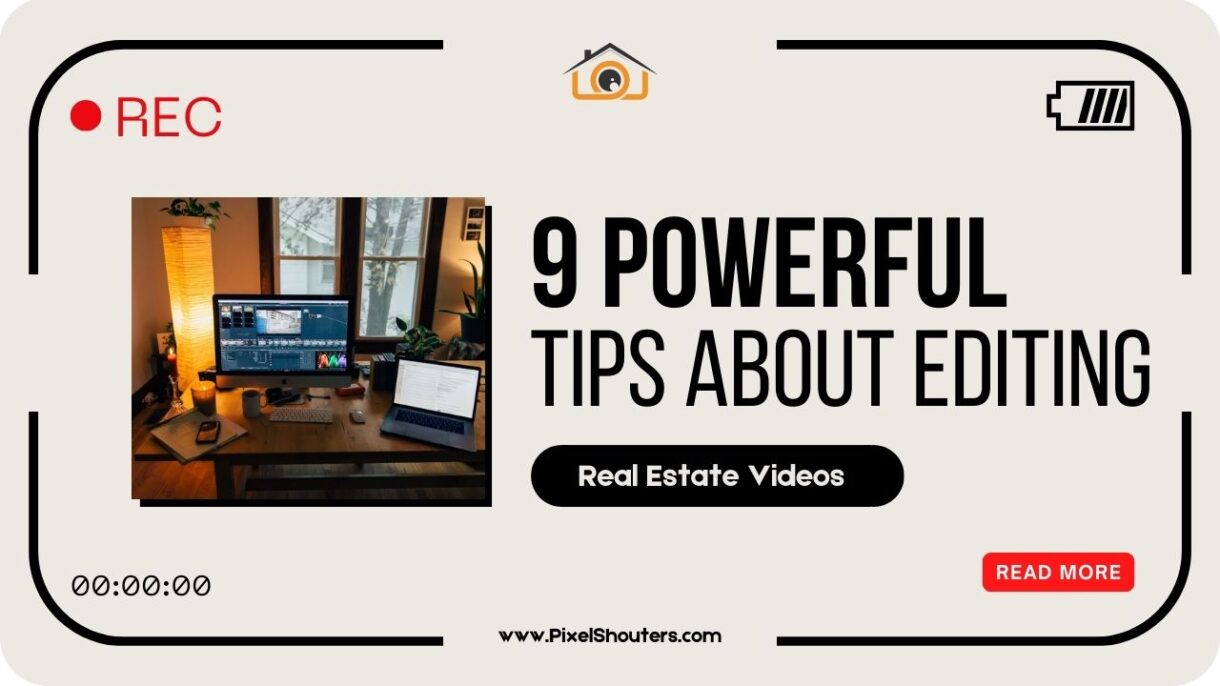9 Powerful Tips About Editing Real Estate Videos
The position of motion pictures has grow to be increasingly prominent inside the ever-converting real estate marketplace. Well-produced real estate films have the power to attract ability shoppers, developing a journey that goes beyond static photos however the effectiveness of these films does no longer stop on the photos by myself at the pics however additionally on how they are edited.
In this complete manual, we’ll discover 9 powerful recommendations to elevate your real estate video editing sport. From the simple settings and equipment to greater superior techniques like coloration grading and platform optimization, this newsletter targets to equip you with the information to create strong, professional videos of buildings and lasting impressions of houses.
Table of Contents
I. Planning your real estate video enhancing:
Effective real estate video enhancing starts lengthy earlier than you open your editing software program. A proper format guarantees that your video matches the unique functions of the belongings and resonates with the target audience.
A. To recognize the brand and target audience:
Step into the shoes of your viewers before you begin editing. Highlight its particular amenities, architectural features and the lifestyle it promotes. Nevertheless, never forget about your target market. Who are you targeting at, young professionals, families or retired individuals? Understanding these aspects helps adjust your editing approach to the interests of the property.

B. provide a clear objective for the video:
What is this real estate video all about? Are you looking to foster awareness on specific stimulants, evoke certain emotions or provide a whole journey? The next steps involve developing reachable dream manifestos that make sure every detail in the video contributes to one another.
C. Creating a Storyboard or Shot List:
Once your objectives are in place, create a storyboard or shot list. This visual roadmap helps organize your footage and ensures you capture all essential elements during the shoot. A well-organized plan minimizes the likelihood of overlooking crucial aspects and streamlines the editing process later on.
II. Essential Tools and Software:
Before you embark on the editing journey, it’s crucial to equip yourself with the right tools and software. The market offers a variety of video editing applications, each with its own set of features. Choosing the right tools can significantly impact the efficiency and quality of your real estate video editing.
A. Overview of Video Editing Software Options:
Several video editing software options cater to different skill levels and requirements. For beginners, user-friendly options like iMovie or Adobe Premiere Elements provide a solid foundation. As you progress, advanced tools like Adobe Premiere Pro, Final Cut Pro, or DaVinci Resolve offer a broader range of features for more intricate editing.
B. Recommended Tools and Features for Real Estate Video Editing:
Regardless of the software you choose, certain features are instrumental in real estate video editing. Look for tools that facilitate seamless cutting and trimming of footage, efficient handling of transitions, and robust color correction capabilities. Additionally, having access to templates for text overlays and graphics can save time and enhance the overall professionalism of your video.
III. Basic Editing Techniques:
With the planning and tools in place, it’s time to dive into the fundamental editing techniques that form the backbone of any successful real estate video.
A. Cutting and Trimming Footage for a Cohesive Flow:
Start by importing your footage into the chosen editing software. Review each clip and eliminate any unnecessary or repetitive segments. Aim for a cohesive flow that guides the viewer through the property smoothly. Pay attention to pacing, ensuring that the video maintains an engaging rhythm without feeling rushed.
B. Adding Transitions to Smoothen Scene Changes:
Transitions play a crucial role in creating a polished and professional video. Experiment with different transition styles but use them judiciously. Simple cuts or subtle fades are often more effective in real estate videos, ensuring that the focus remains on the property rather than the editing technique.
C. Adjusting Color Balance and Correcting Exposure:
Proper color balance and exposure are non-negotiables in real estate video editing. Correct any color inconsistencies and ensure that the exposure levels accurately represent the property. This step lays the foundation for more advanced color grading techniques in later stages.
IV. Showcasing Property Features:
Now that you’ve mastered the basics, it’s time to focus on showcasing the unique features of the property. This involves intentional editing to highlight key selling points and provide viewers with a comprehensive understanding of what the property has to offer.
A. Highlighting Key Selling Points Through Effective Editing:
Identify the standout features of the property and ensure they receive the attention they deserve. This could include spacious kitchens, luxurious bathrooms, or breathtaking views. Implement editing techniques such as close-ups, slow-motion, or dynamic camera movements to accentuate these features.
B. Utilizing Close-Ups and Smooth Transitions for Details:
Close-up shots are invaluable when it comes to showcasing intricate details. Whether it’s the texture of countertops, the craftsmanship of a fireplace, or the design of light fixtures, close-ups allow viewers to appreciate the finer aspects of the property. Smooth transitions between these close-ups maintain a polished and professional presentation.
C. Incorporating Aerial Footage for a Comprehensive View:
For properties with expansive outdoor spaces or impressive architecture, consider incorporating aerial footage. Drones provide a unique perspective, offering viewers a comprehensive view of the property’s layout, surroundings, and overall appeal. Ensure that the aerial shots seamlessly integrate with ground-level footage for a cohesive viewing experience.
V. Incorporating Music and Narration:
The auditory elements of your real estate video are as important as the visual aspects. Thoughtful use of music and narration can enhance the overall viewing experience and convey the property’s atmosphere.
A. Choosing the Right Background Music to Enhance the Mood:
Selecting the appropriate background music sets the tone for your video. Consider the property’s style and target audience when choosing music. Soft, instrumental tracks work well for elegant homes, while more upbeat tunes might complement vibrant, modern spaces. Ensure that the music enhances the video without overpowering the visuals.

B. Adding Voiceovers or Narration to Provide Information:
Voiceovers or narration can provide valuable information about the property. Share key details such as square footage, notable features, and the property’s unique selling points. A well-scripted narration adds a personal touch, guiding viewers through the virtual tour and offering insights that may not be apparent from visuals alone.
VI. Color Grading for a Professional Look:
Color grading is a powerful tool that can transform your real estate video, giving it a polished and professional appearance. This step involves adjusting colors to create a consistent and appealing visual style.
A. Adjusting Colors to Create a Consistent and Appealing Visual Style:
Begin by ensuring that colors are accurate and realistic. Address any color irregularities that might have arisen during the filming process. Once the baseline is established, experiment with color grading to achieve a look that complements the property’s aesthetic. Warm tones can evoke coziness, while cooler tones may convey modernity and tranquility.
B. Enhancing the Overall Aesthetic of the Video Through Color Grading:
Go beyond basic color correction and experiment with color grading techniques to enhance the overall aesthetic. This could involve creating a specific mood or atmosphere that aligns with the property’s character. Maintain consistency throughout the video to provide a cohesive and visually pleasing experience for the viewer.
VII. Optimizing Video for Different Platforms:
In today’s digital landscape, real estate videos are shared across various platforms, each with its own specifications and audience expectations. Optimizing your video for different platforms ensures maximum reach and engagement.
A. Ensuring Compatibility with Various Devices and Platforms:
Before finalizing your edit, confirm that the video is compatible with a range of devices, from smartphones to desktop computers. Test different resolutions and formats to ensure optimal playback quality. This step is crucial for reaching a diverse audience with varying preferences in terms of viewing devices.
B. Understanding the Optimal Length for Different Platforms:
Different platforms have varying audience attention spans, and understanding these nuances is key to effective real estate video marketing. While a more in-depth video may be suitable for a property listing on a real estate website, shorter, engaging snippets may perform better on social media platforms. Tailor the length of your video to the expectations of each platform to maximize viewer retention.
VIII. Adding Text and Graphics:
The incorporation of text and graphics is a crucial aspect of real estate video editing. These elements serve to provide additional information, highlight key features, and contribute to the overall branding of the property.
A. Including Captions to Highlight Property Details:
Captions are an effective way to convey essential information about the property. Include captions to highlight specific details such as the number of bedrooms, square footage, unique amenities, and any special selling points. Ensure that the text is legible and complements the overall design of the video.
B. Incorporating Branding Elements for a Professional Touch:
Establishing a brand is crucial for fostering a unified and professional identity. Integrate branding elements such as logos, contact information, and color schemes into your video. Consistent branding not only reinforces your company’s identity but also adds a level of trust and recognition among potential clients.
IX. Staying Updated on Trends:
The world of video editing is dynamic, with trends constantly evolving. Staying updated on the latest developments ensures that your real estate videos remain fresh, engaging, and aligned with current industry standards.
A. Keeping Abreast of Current Real Estate Video Editing Trends:
Regularly explore industry publications, online forums, and social media to stay informed about current trends in real estate video editing. This could include emerging visual styles, innovative editing techniques, or advancements in technology. Adapting to these trends keeps your content relevant and appealing to a contemporary audience.
B. Incorporating Innovative Techniques for a Modern Touch:
Experiment with innovative techniques to infuse a modern touch into your real estate videos. This could involve incorporating drone footage, virtual reality elements, or interactive features. Embracing new technologies and creative approaches sets your videos apart and demonstrates a commitment to staying at the forefront of your industry.
X. Quality Control and Review:
Ensuring the quality of your real estate video is paramount before presenting it to potential clients or posting it online. Thorough review and quality control help identify and rectify any issues, ensuring a polished final product.
A. Thoroughly Reviewing the Edited Video for Errors:
Before finalizing your real estate video, conduct a comprehensive review. Check for errors in continuity, audio quality, and visual consistency. Ensure that all elements align with your initial objectives and that the video flows smoothly from start to finish. Address any issues, no matter how minor, to present a flawless final product.

B. Seeking Feedback from Colleagues or Clients for Improvement:
Getting a new perspective can offer valuable insights. Share your edited video with colleagues or clients and gather feedback. Pay attention to their perspectives on pacing, visual appeal, and overall effectiveness. Constructive feedback allows for refinement and improvement, ensuring that the final version meets or exceeds expectations.
Conclusion:
As we conclude our exploration of powerful tips for real estate video editing, it’s essential to summarize the key takeaways and encourage a commitment to ongoing improvement.
The world of real estate and video editing is dynamic. Encourage readers to view this guide as a starting point and to continually seek improvement. Emphasize the importance of adapting to emerging industry trends, staying updated on new technologies, and incorporating feedback into their editing process.
